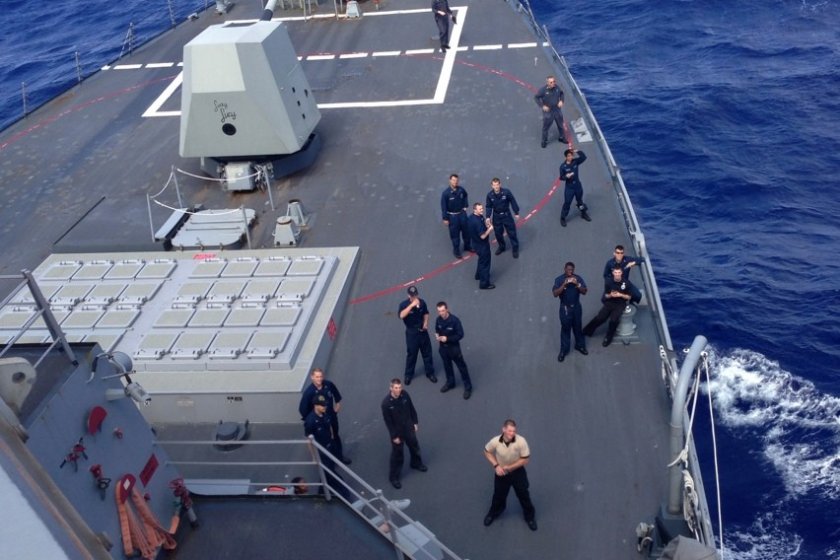Some sizable clumps of us Americans here are, in a word, military. Service members, dependents (ugh, that word), retirees passing through while living the high life of armed forces perks without being “yes men.” If you fall into one of these categories—whether a newcomer or experienced family which simply hasn't tried it—know this: military space-A travel is not an urban myth.
Just in case you don’t know, space-A stands for space-available, and can now join your brain’s treasure chest of military acronyms. You might also hear ‘Air Mobility Command (AMC) travel’ tossed around in your space-A conversations or research. It’s essentially the same thing, just the U.S. Air Force’s version. In a nutshell, this free service still exists, it’s completely doable and a few tips can make all the difference.
First; paperwork* reigns supreme
Once you know where to go and what to do, you’re halfway to your destination. So whatever base you’re stationed at, or whatever air installation is closest to you, is the best place to start. At the passenger terminal. Go there if it’s easy. Sometimes the phone just doesn’t cut it since base (especially overseas) phone numbers can be as unreliable as the people who answer them. It’s often easier to communicate in the flesh, hopefully with the most experienced employee present, to ensure you understand what paperwork (and procedures) are necessary for lift-off from that terminal.
Rules can vary between locations, and can even change, so you’ll likely have to rely on calling your destination, or any terminal you plan on flying out of, to fully understand their latest requirements. Email and fax also work but allow enough lead-time; these methods are also used for sending paperwork ahead of time as needed. The AMC travel website is a good starting point for contact information for all the terminals you could possibly make use of in the world.
When first visiting your departure terminal, take all your paperwork (don't forget to see below for the usual suspects), from your passport to your latest orders to your DEA (dependent entry approval). If you're a dependent, you’ll need to get and bring a space-A travel letter from your spouse’s commanding officer. This is easily done; you can even do it yourself. Also, you probably received a SOFA (Status of Forces Agreement) passport stamp when you moved to Japan, but double-check it's there and make sure its date extends well beyond your planned trip. The terminal will likely make copies of what they need and add you to their system or register or whatever they want to call it. Make sure they actually sign you up for anything that needs signing up for. For travel, for a specific flight, whatever. Then take all those precious documents again when you head out for your potential trip.
Supertip: Military life in general is easier when you keep copies of everything in an easy-to-use folder in a safe, easy-to-remember place, don't you think...?
Note: If an active duty member is deployed over 120 days, they and/or their spouse qualify for an EML (emergency morale leave) letter, which can bump up passenger priority.
Also, when doing your “human factor” legwork, be persistent. At the end of your conversations with terminals, consider asking:
“Is that everything I need to know and bring to get on a flight?”
“Do you have copies of everything you need to sign me up for travel through you?”
“Is [insert resource like Facebook, webpage, or phone number] the best place to learn your latest flight information?”
If they answer “yes” to all, you’re sitting pretty.
Second; flexibility is key
This includes keeping your emotions in check and preparing yourself for a delayed or canceled trip, an unexpected stop or rerouting. The silver lining that carries you through is the obscene amounts of money saved. Only when a lodging bill surpasses a return ticket is it worth going to the commercial airlines. And assuming you aren’t foregoing any money-earning tasks back home like a shift at Starbucks.
Third; everything else
It’s really hard to find a third way to sum up all the details of space-A travel, so here’s all the other info you need to know:
- Reservists as well as National Guard and certain Department of Defense employees are eligible to fly.
- Try to plan your trip seasonally, as summertime and holidays aren’t ideal for getting a seat if you're low priority; also, busier terminals will offer more flights and thus more seats.
- You can typically sign up for travel up to 60 days prior.
- You can sign up at as many terminals as you wish. For example, maybe you want to increase your odds of getting on a flight one week so you sign up at both NAF Atsugi and Yokota AFB.
- There are different categories that passengers fall into for prioritization; within each category, seats are further assigned based on date and time registered.
- You may be on a passenger plan or a C-130 but either way, there’ll be a bright side: enjoy a boxed meal and a movie or stretch out luxuriously on your camping mat in a cargo hold. (You should be able to know ahead of time what plane type you're trying to board.)
- If you've got the time, make copies of all your paperwork to leave behind or take with you as appropriate, as well as make digital copies to access just in case.
- Pack lightly. But bring snacks and entertainment based on your travel needs. Plus, bring cash and cards for unexpected expenses, and alert banks of travel plans.
- Arrive early—two to three hours in case seats are released early.
- Check in upon arrival.
- Sometimes there are very small fees when flying internationally.
- When you get to your destination, register for your return before you leave the terminal.
- Digital roll call is growing in popularity, so be sure to ask about this convenient way to find out via email if you made the cut.
That’s it. Leave comments if you have any tips from your own experience and for some reason kept reading a space-A how-to. But hopefully this guide comes in handy for some of you military ID-holders, and you find yourself spacing out on a free flight home or to a true adventure.
*Paperwork always brought should include: your military ID (just bring all the usual stuff in your wallet), passport with SOFA stamp, Space-A travel letter, EML (emergency moral leave) letter if desired, latest orders, DEA (dependent entry approval) and anything else that seems important like birth and marriage certificates.





























